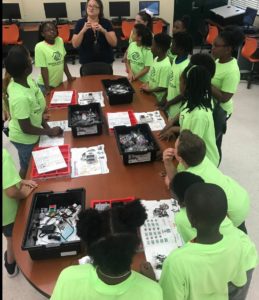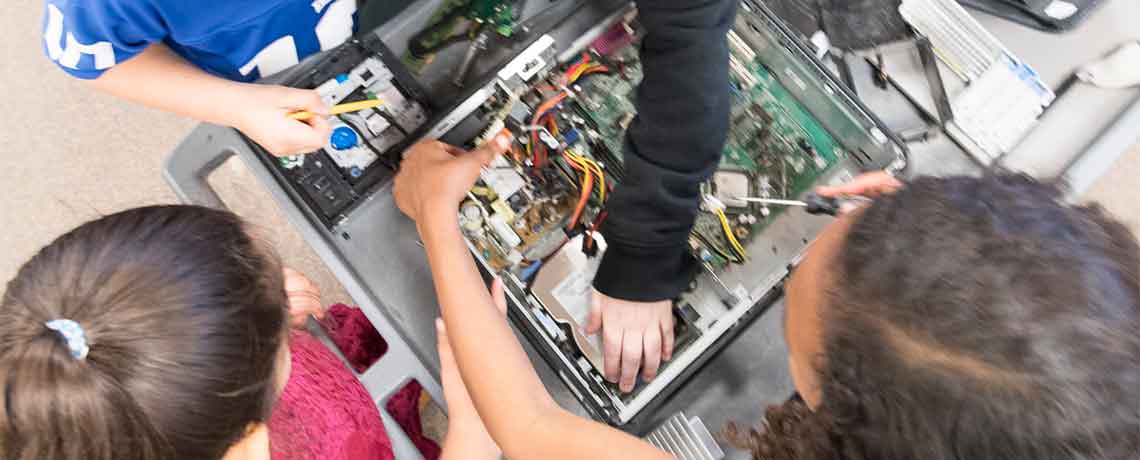
As we wrap up STEM2 Hub’s second year of summer camp programming, we want to thank our partners, Communities in Schools of Jacksonville and the Boys and Girls Clubs of Northeast Florida, who helped us provide an exciting and STEM-focused summer learning experience on topics including robotics, coding, health science, and web design.
By the numbers
We reached OVER 200 students from 11 CIS and Boys and Girls Clubs locations across Jacksonville with our elementary and middle school curriculum incorporating science, technology, engineering, math and medicine. The students gathered on the campus of A. Philip Randolph Academies of Technology each day.
The curriculum encourages problem-solving through play-based learning opportunities in a classroom setting.
Day by day
Monday – ROBOTICS: Students learned how to use software to program FIRST LEGO League robots, and studied robotic movement and other programming options.
Tuesday – CODING: Students learned how to write programs to order the robots to run specific courses.
“Once they became acclimated to the software, options, and programming procedure it was literally ‘off to the races’. They were really excited about making things move, problem-solving and competing against each other,” program instructor and A. Philip Randolph teacher Janine Aleong observed.
Wednesday – MEDICINE: Students were immersed in health science topics, including how to measure heart rate, respiration, pulse, and temperature.
Thursday – WEB DESIGN: Students learned about web design topics, including design theory elements such as color and content, building a small website using templates, and how to customize content.
Student feedback
At the end of camp each week, we asked each student to complete a survey so we could measure interest levels for participation in school-based activities.
- 99 percent of students reported that they enjoyed learning how to create a website
- 94 percent of students reported that they enjoyed building and programming robots
- 90 percent of students said learning about STEM inspired them to work harder in their math and science classes
Aleong made some anecdotal observations as well.
“Many kids demonstrated growth in the area of problem analysis. They were able to create algorithms that moved them closer and closer to a solution for their mission with each iteration,” she said. “Another demonstrated growth measure that was prevalent this year is that they were able to recognize the iteration strategy early in the mission. This shows that they made the connection with the engineering process: design, build, test, repeat.”
Many students have already expressed their desire to return next year to STEM2 Hub’s summer camps. In response, STEM2 Hub has begun developing a three-year rotating program to allow returning students to experience a continuum of new activities each year. Our goal is to continue growing these students’ interest in STEM careers by exposing them to a wide variety of possibilities in our economy’s fastest growing workforce sectors, and igniting interest and building skills to ensure they are future–ready.
